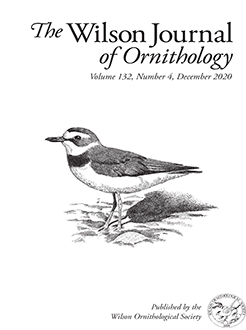Vast areas of North American grasslands have been lost and degraded, resulting in unprecedented declines of biodiversity. For example, 82% of North American grassland songbird species are experiencing population declines. Basic natural history, life history, and demographic data from different regions and time periods are essential for modeling population dynamics and developing effective conservation strategies for grassland birds. We monitored 392 nests to provide information on nesting biology, quantify reproductive success, and gain insight into the extent to which predation and weather influence nest survival of 7 grassland songbird species in southwest Saskatchewan, during 2010 and 2011. Clutch sizes of all species were within the range reported previously and declined as the breeding season progressed, particularly for Chestnut-collared Longspur (Calcarius ornatus), Vesper (Pooecetes gramineus) and Baird's (Centronyx bairdii) sparrows, and Western Meadowlark (Sturnella neglecta). Overall, 32–69% of the nests we monitored were depredated, and predation accounted for 91% of all unsuccessful nesting attempts. Daily survival rates were lowest during the nestling stage for 5 species, and nest survival estimates ranged from 16% to 48%. Nest survival of 4 species was influenced by the temporal effects of age and date. Chestnut-collared Longspur and Western Meadowlark nest survival increased through early to mid-incubation and declined thereafter until ∼3 d prior to fledging before increasing again. Nest survival of these 2 species, along with Sprague's Pipit (Anthus spragueii) and Vesper Sparrow, were lowest in late June to early July. We found no support for a strong effect of precipitation on nest survival. However, nest survival rates declined with increasing ambient temperature for Chestnut-collared Longspur and Horned Lark (Eremophila alpestris), the 2 study species with the most exposed nests, and were highest for Western Meadowlark nests when ambient temperatures were between 15 and 24 °C.
How to translate text using browser tools
14 September 2021
Nesting ecology and reproductive success of mixed-grass prairie songbirds
Carolyn A. Gaudet,
Eric N. Green,
R. Mark Brigham,
Stephen K. Davis
ACCESS THE FULL ARTICLE
breeding biology
grassland birds
nest concealment
nest survival
predation
Saskatchewan
weather





